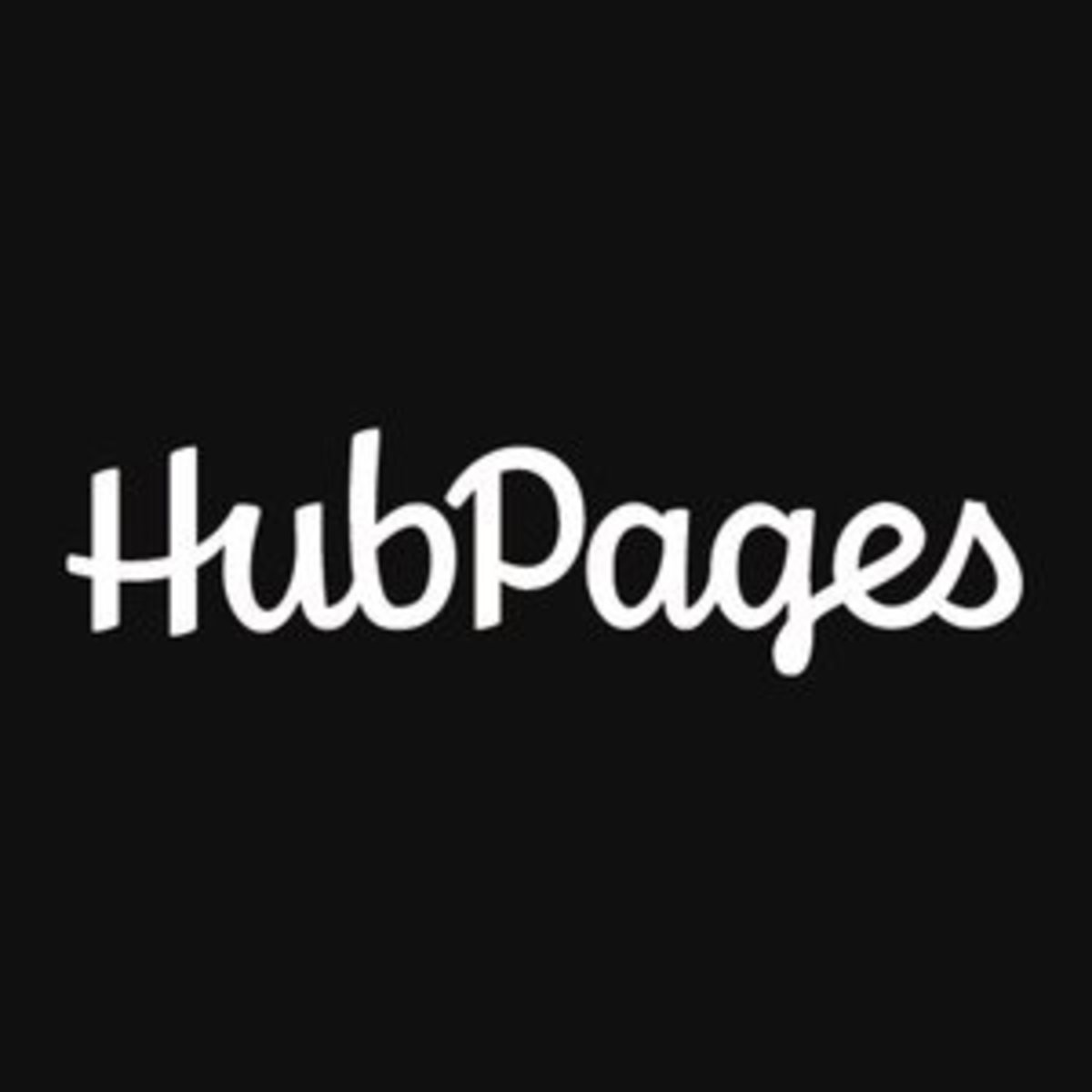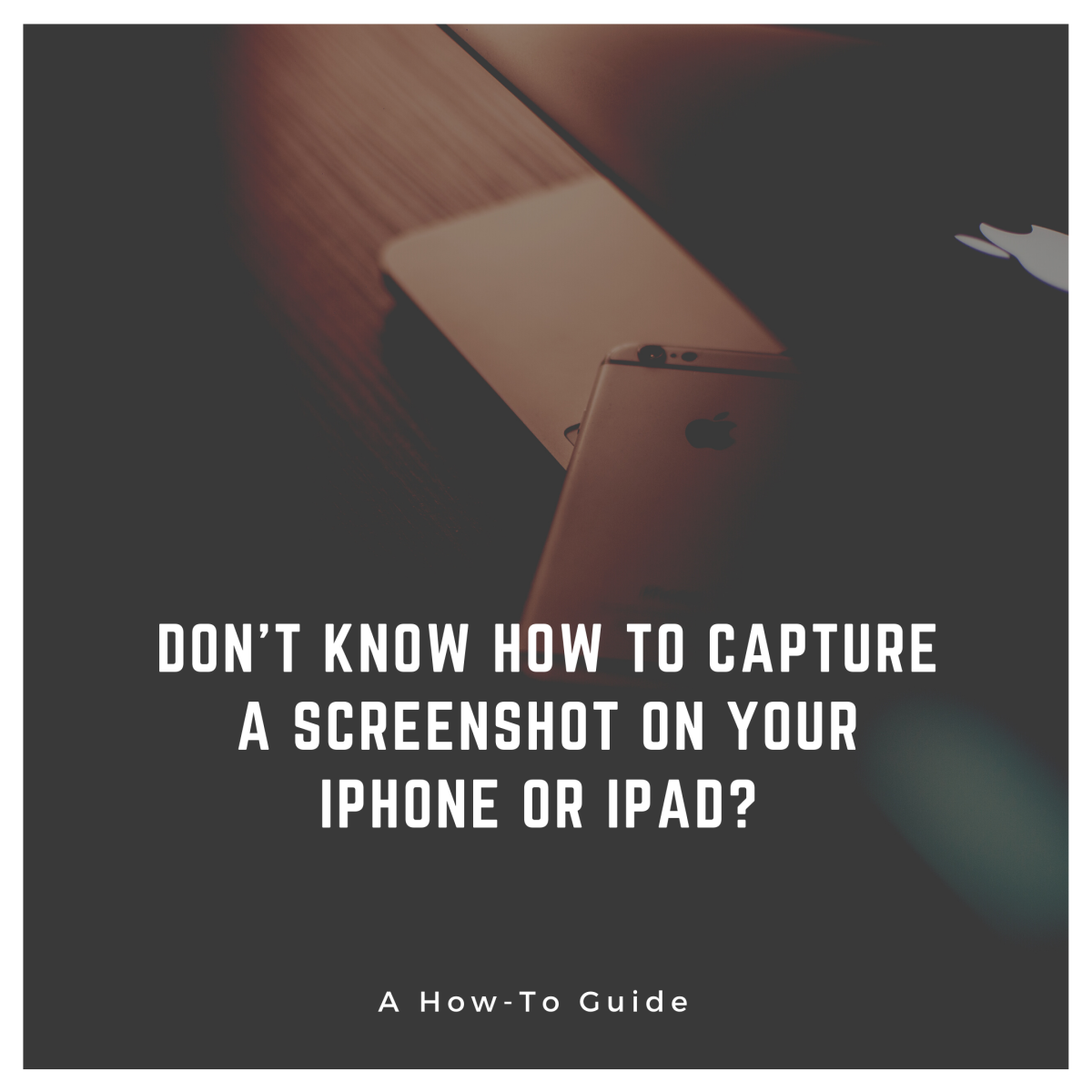7 Quick SEO Tips that You Do in 7 Minutes

Optimize Your Content with These Easy SEO Techniques
Do you have 7 minutes? If yes, then you can try implementing at least one of the SEO tips listed below. Each of these tips take only a few minutes to do on your content page but makes a world of difference when it comes to your SEO. I've used the very same tips provided below to raise my article rankings on Google and Yahoo!, increase my HubPages earnings, and organize my content around specific topics.
SEO (Search Engine Optimization) is the art and science of having your content found by search engines such as Google, Yahoo!, Bing, etc. This primarily involves the use of keywords that accurately describe what your posted content is about. Keywords are what Web users will type into search engines sites to look for content related to those keywords. For example, if Web users are looking for information about the Apple iPad, their search keywords might include "Apple", "computers", and of course "iPad". Since search engine "bots" categorize content by its description via keywords, it is imperative that you employ these same keywords in your content so that it appears in a prominent position on the search engine results pages (SERPs). In this way, Web users who type in the search keywords "Apple", "computers" or "iPad" are able to see your website pop up on the SERPs.
However, since these keywords will already be quite popular, you could further differentiate your posted content by using descriptive keywords as well. If your content is about getting the best deals on an iPad, you could use "where to buy apple ipad" and "apple ipad store locations". Such terms are actually called long-tailed keywords and are more likely to bring targeted traffic to your site.
Now that we have a basic understanding of keywords and SEO, let's dive into optimizing content via SEO:
Tip #1: Title tags should contain your main keywords.
Your web page title should always contain your main keywords and brand names. If it doesn't, this can be changed by editing the HTML/XHTML code of the page via your personal web design software. Here is an example of a title tag:
<title>Here is an example of a Title Tag</title>
Suffice it to say that, if you don't optimize your title tags for your chosen keywords, you may as well not bother optimizing your content at all. Title tags are probably the most crawled and categorized feature of your entire web page and they also make up a good portion of that page's URL.
In some cases, you won't even need to go into HTML/XHTML; programs like WordPress give you a formatted page which you can edit by using the installed word processing software. Do not make the title tag any longer than 70 characters, however, or it will get cut off in most browser windows.
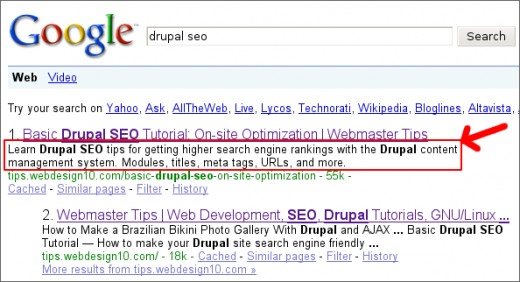
Tip #2: Meta descriptions should contain keywords.
A meta description is a small block of text (roughly 155 characters) that is typically displayed underneath the title area of a page by search engines. Some meta description areas are also called excerpts (especially by Wordpress programs). In essence, meta descriptions are optional summaries of your content that can be posted to your blog, Facebook, Twitter or LinkedIn pages. These descriptions educate visitors on exactly what your content is about in the space of a few sentences.
Your main keywords should be present, and even bolded, in your meta description. This helps confirm the subject matter of your content for search engines, allowing them to categorize that content correctly. While the presence of keywords in your meta description won't instantly catapult your content to the #1 position in the SERPs, it will help draw targeted traffic to your site, since those visitors who go to your content will be expecting the content described in your meta description. This will reduce the percentage of visitor bounces on your site (due to visitors not finding what they searched for).
Tip #3: Content should contain keywords and keyword variations.
Your main keywords should be included in your title tags and meta descriptions. However, when writing your content, you should also insert variations on your main keywords. This provides the content with a more natural look and feel and helps lower the risk of "keyword stuffing" (i.e., using the same keywords over and over to the point of making the content seem grammatically stifling and/or incorrect).
You can use the Google AdWords Keyword Tool to locate keyword variations. Simply go to the site https://adwords.google.com/select/KeywordToolExternal, type in a keyword or phrase, and the Keyword Tool will draw up a list of related keywords and phrases for you. You may choose keyword variations from this list to add more depth to your content.
Also, whenever there is a heading tag in your content, it doesn't hurt to insert your main keywords there too. A heading tag is marked as follows:
<h1><a title="The Power of Keywords in a Heading Tag"</h1>
Search engines crawl heading tags and assign better SERP positions to those content sites that contain relevant heading tag keywords.
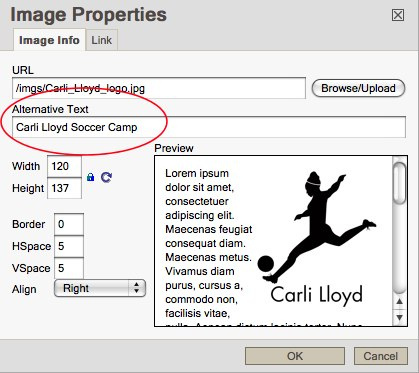
Tip #4: Insert keywords into the file name, title and alt tags of images
Search engines can crawl through and index quite a lot of content; however, despite their many advances, they still cannot "see" images. This is why it is imperative that you add a description and relevant keywords when including an image with your content. The file name of the image is the first place to start; rather than leaving an image file labeled as "20121123dYupopghy.jpg", consider changing that file name to something relevant to your content. Preferably, the image file name should be tweaked to contain at least one relevant keyword.
Many blogging programs such as Wordpress will ask you to provide a title for your image. It is best to include one or more keywords in the title of your picture. Providing a title not only helps your content achieve better SEO, it also helps place it into search engine image sites (e.g., Google images).
Finally, the alternative text of an image should always be outfitted with one or more keywords. This helps categorize your image in case a viewer's browser cannot download the file. An alt tag might look like the following once you have added a description to it and named the image file:
<img src="seo-tips.gif" alt="7 Quick SEO Tips"/>

Tipe #5: Content should be of high quality
Don't assume that keywords are all that matter when it comes to SEO. The recent Google Panda updates have focused almost exclusively on seeking out and featuring unique and high quality content on the SERPs. As a result of these updates, you are better off writing for your readers first and for the search engines second. Of course, once your unique and high quality content is written, you can always go back and implement Tip #3, inserting keywords and keyword variations.
When it comes to creating high quality content, try keeping the following rules in mind:
- Create unique content that is informational, contains original reporting, and includes some research or data analysis.
- Created content requires quality control checks for proper grammar and spelling.
- Content should be thorough, providing comprehensive coverage of a topic.
- Content should be about a topic that readers would want to share or re-post.
Admittedly, creating content of high quality may take more than 7 minutes to do. However, you need not tackle an entire blog post or web page in one sitting. Instead, take a look through the content that you have already written and create an outline of what is noted. Then, look over your outline and ask what point or points are missing in your content. Are there any recent developments in this topic matter? Also, what comments have your readers left concerning your content? Even by adding a single paragraph to your content, you can greatly "flesh out" the meaning of your blog post or web page. This is easily accomplished if your content is already divided into topic sections or text boxes (which is possible on sites like HubPages). Alternately, you may wish to add an introductory paragraph or summary.
Tip #6: Create anchor text links
Create anchor text links in your content that link to and from various content pages. These anchor text links will help index your pages on search engines. Because you can control the content that your anchor text links contain, use keywords and keyword variations to gain a higher SERP ranking.
Internal links are useful for another reason as well: they help reduce the bounce rate of your site. Bounces often occur because your visitors cannot find the content they are looking for and so exit your site as a result. However, if you place anchor text links to various pages of your website, your readers are likely to click on these links instead of leaving altogether. This not only helps you maintain visitor interest; low bounce rates also increase your search engine ranking.
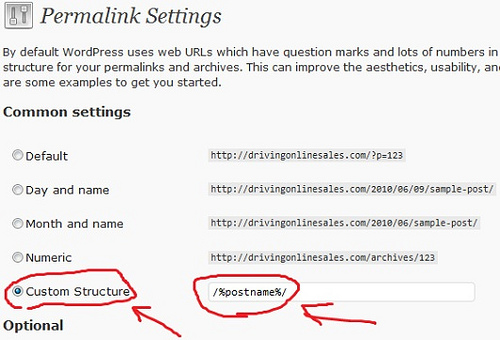
Tip #7: Simplify (and optimize) your permalinks.
A permalink is the actual URL of the blog post or web page that is displayed in the browser window when visitors click on your content. The permalink is, in essence, the permanent web address of your content. In HTML, it should contain the following elements:
<link rel="" href="[Permalink URL]" />
Programs such as Wordpress allow you to edit your permalink once it is created in your post or page. It is highly advisable that you do edit your permalink, inserting keywords and keyword variations to make the link more relevant to search engines. For example, if you just finished writing a blog post about how to better manage the dividend stocks in your DRIP, your permalink might look like this:
<link rel="bookmark" href="How-to-improve-your-profit-margins-by-investing-in-these-top-10-dividend-bearing-stocks" />
To streamline this permalink, you might reword it as follows:
<link rel="bookmark" href="top-dividend-stocks-for-your-DRIP" />
This permalink contains all the keywords that were present in the longer permalink as well as in the blog post's content. However, the shorter permalink is easier for readers to remember and it also better presents the topic matter to search engines. Because search engines do index permalinks, it pays to insert relevant keywords into these URLs.
In order to edit your permalinks, you will first need to set your Wordpress permlink setting to custom structure, as shown in the attached image.
Summary
I hope that these 7 SEO tips have been informative and helped raise your own site's SERP ranking. If you'd like more ideas on increasing traffic to your websites and/or blogs, increasing sales leads, and lots more, please refer to my other articles in this series:
How to Better Capture Sales Leads Into Your Sales Funnel
4 Ways to Attract Traffic to Your Website- and the One Way that Works Best
Understanding eCommerce: The Online Sales Funnel







